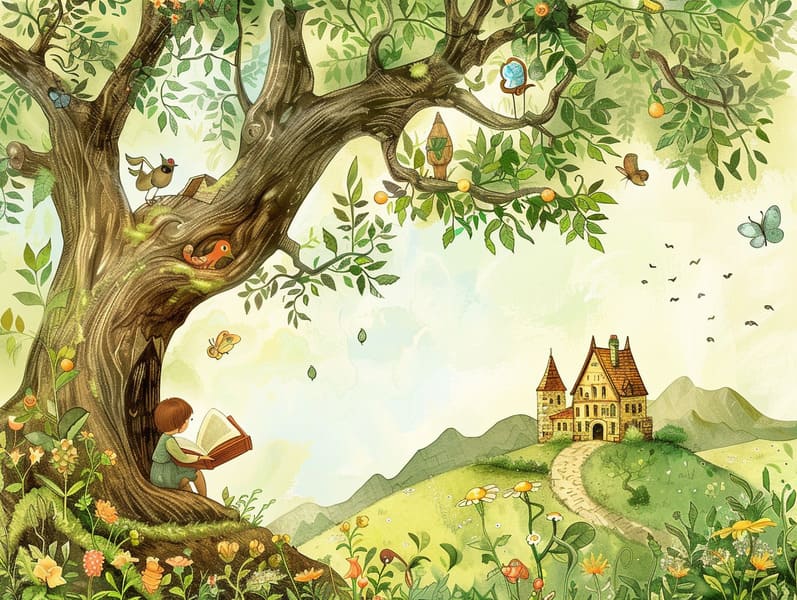The Formation of Vintage Fairy Tales with Its Enduring Delight.
The Formation of Vintage Fairy Tales with Its Enduring Delight.
Blog Article

Short fairy tales have long histories. These tales have been narrated from one generation to the next millennia before they were ever put on paper. They arose from a variety of societies, including European traditions. They were initially passed along among adults, often carrying themes and messages concerning the societal norms and beliefs of the time.
Jacob and Wilhelm Grimm, the two Grimm brothers, were among the first to compile many of these beloved tales. Their anthology, "Grimm's Fairy Stories," included tales like "Cinderella," "The Bread Crumb Trail," and "Little Snow White," which have since become mainstays in the world of beloved fairy tales. Similarly, the Danish author's enchanting fairy tales, such as "The Mermaid," and "The Duckling that Could," have won hearts worldwide, guaranteeing their place in the pantheon of iconic fairy tales.
Despite their historical roots, traditional fairy tales remain as impactful as ever, especially as children's bedtime stories. These whimsical stories are now available in diverse formats, including richly illustrated books, magical animations, and web-based fairy tales.
Their lasting appeal can be connected to several captivating elements:
Valuable Lessons: Old fairy tales often share important moral lessons. Fairy tales like "The Boy Who Cried Wolf" teach the value of being truthful, while "The Tortoise and the Hare" illustrate the merits of determination and humbleness. These tales offer kids clear distinctions between virtue and vice, forming their moral compass in a kind yet impactful way.
Warmth and Understanding: Fairy tales frequently portray personalities facing tests and troubles, fostering young readers to relate with their struggles and champion their triumphs. For instance, "Beauty and Her Beast" highlights the benefit of valuing inner qualities to understand the inner being of a character, cultivating understanding and recognition.
Cultural Awareness: Many ancient fairy tales are deeply ingrained in the cultural contexts from which they sprang. Engaging with these tales can provide intriguing perspectives into different cultures, strengthening a sense of world respect and awareness.
Inventiveness and Fantasy: The extraordinary elements in ancient fairy tales—wizardry and magic—fuel children’s creative dreams. These stories move readers to enchanted realms, stimulating fantastical thinking and a sense of astonishment that remains a lifetime.
Old fairy tales are not only magical but also didactic. They provide captivating tools in building various brain and heart skills in the young. When traditional fairy tales are told out loud, they foster speaking abilities by offering new language and elaborate sentence structures. This practice also boosts hearing abilities and focus, as young ones track the narrative, excited to see what happens next.
Furthermore, conversing about the themes and characters of classic fairy tales can strengthen evaluative skills and logical thinking. Young readers are led to pinpoint patterns, guess what will happen, and know cause and effect. These conversations also help little ones reveal their thoughts and feelings, enhancing their emotional intelligence.
In today’s digital age, the accessibility of online storybooks has made these tales more available than ever. Websites and online apps present wide arrays of bedtime fairy tales that can be looked at or listened on anytime, anywhere. Fairy tales read aloud are particularly well-received, sharing an captivating way for kids to savor these whimsical stories. Voice books and narrated videos carry characters and settings to life, often paired with charming audio effects and music that intensify the tale experience.
The unending appeal of old fairy tales lies in their ability to adjust to modern times while holding onto their central values. Contemporary retellings of these narratives often present more varied figures and modern settings, making them understandable to today’s audience. However, the key lessons of bravery, goodness, and truth remain unchanged, continuing to appeal to readers of all ages.
Fairy tales also offer a sense of calm and knowability. They extend a structured narrative with a straightforward beginning, middle, and end, often wrapping up with the wrap-up of conflicts and the triumph of goodness over badness. This foreseeability can be consoling for children, making known a sense of invariability in an constantly changing world.
Traditional fairy tales continue to enchant and instruct new generations, maintaining their enchantment and applicability in modern society. As nighttime stories for kids, they present to a perfect blend of enchantment and education, enriching moral values, empathy, and creativity. The abundance of digital fairy tales and the favor of fairy tales spoken ensure that these old stories remain accessible to new generations.
By conserving and sharing these narratives, we continue to exalt the rich tapestry of human imagination and cultural heritage. Whether you are exploring a artistically illustrated book, viewing a online library, famous fairy tales for children or hearing an spoken story, the appeal of popular fairy tales is always within reach. These stories convey of the immortal essence of fairy tales and its ability to bind us across eras and regions.
Regardless if you are discovering a artistically illustrated book, exploring a digital library, or listening on an audiobook, the grace of Grimm's fairy tales is always within reach.
These fairy tales emphasize of the continued strength of fairy tales and its ability to connect us across time and space, forging a link that captivates and teaches alike.